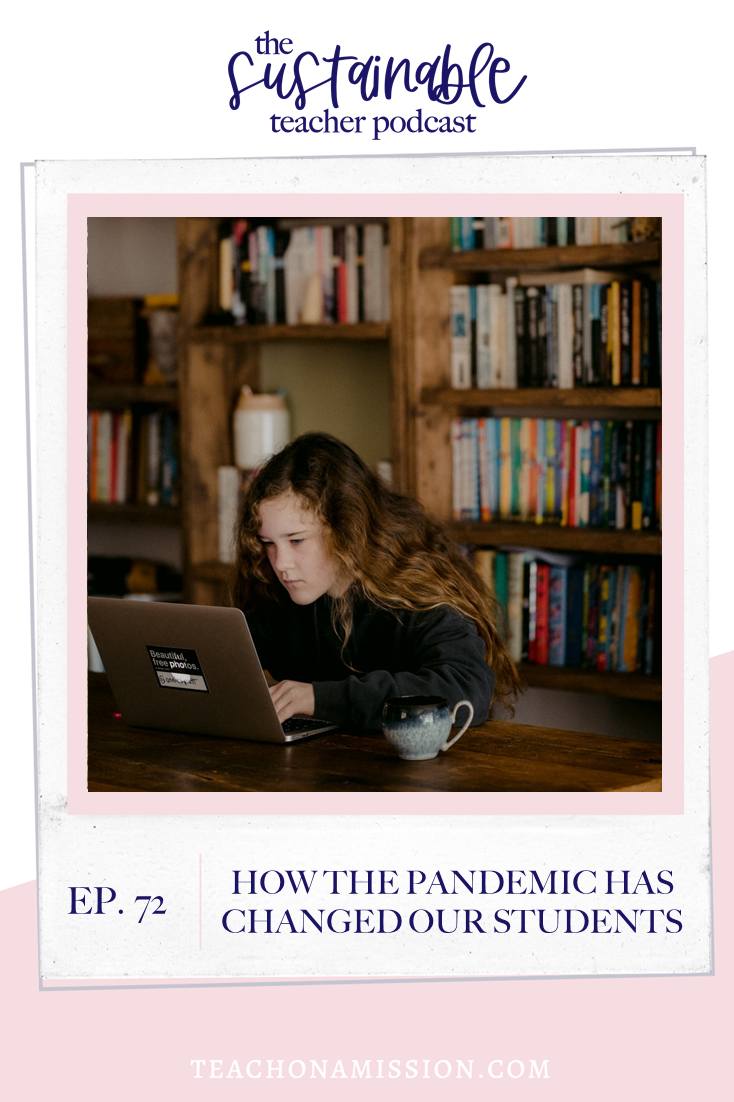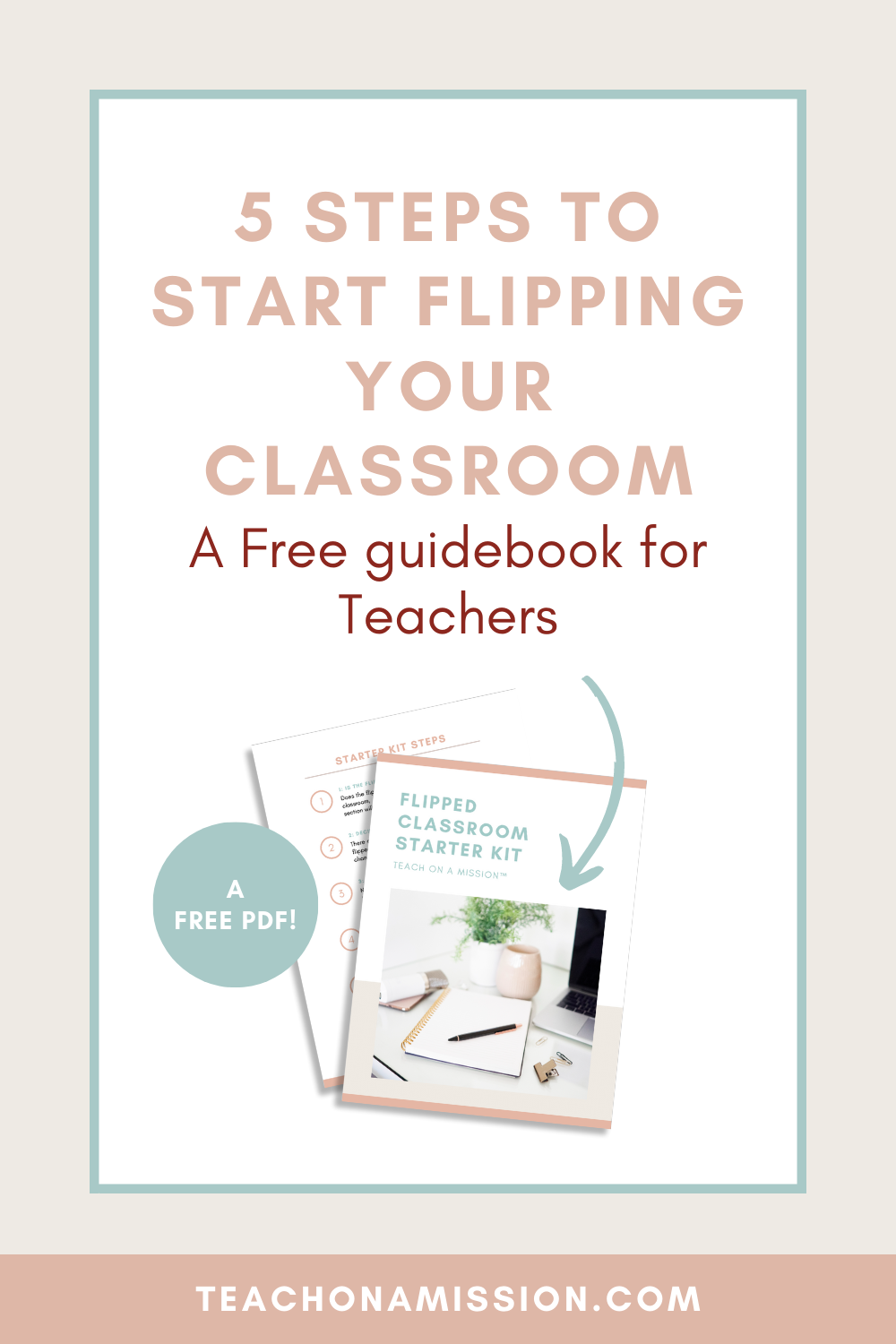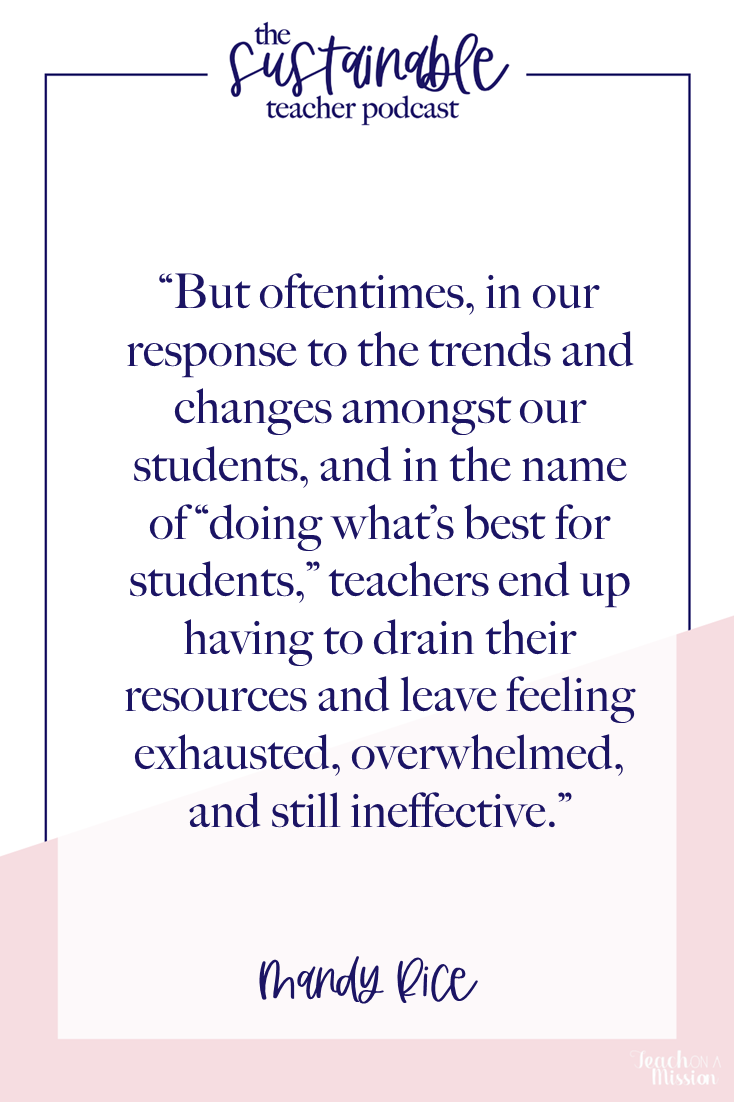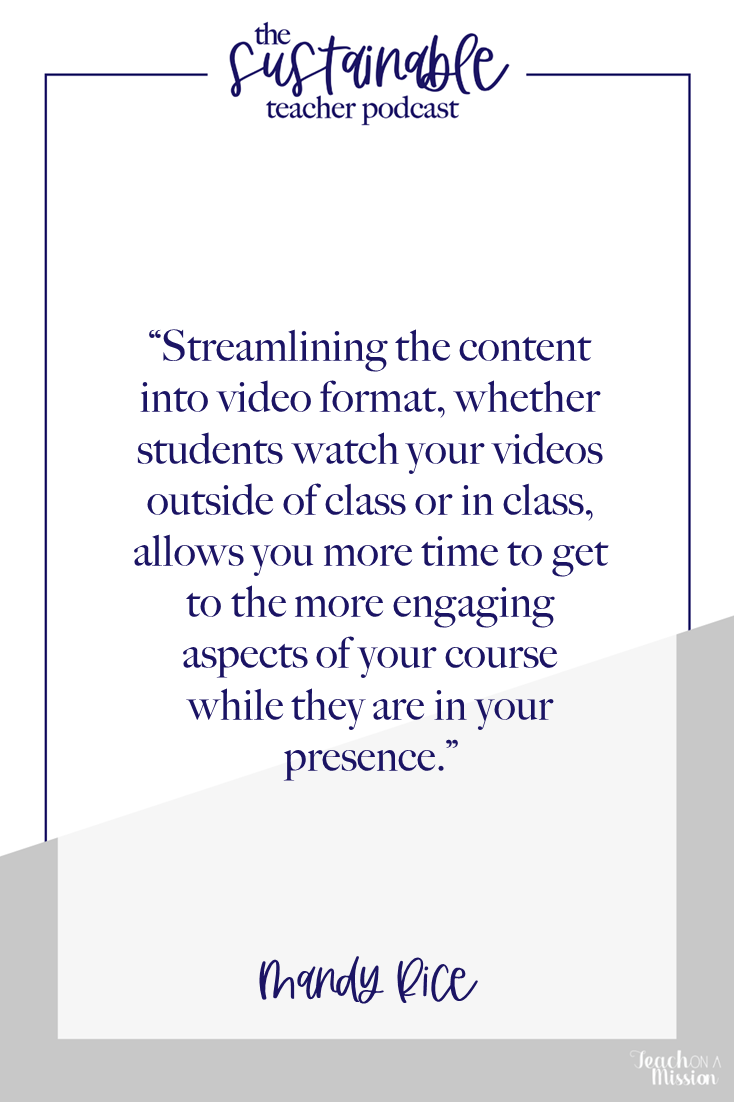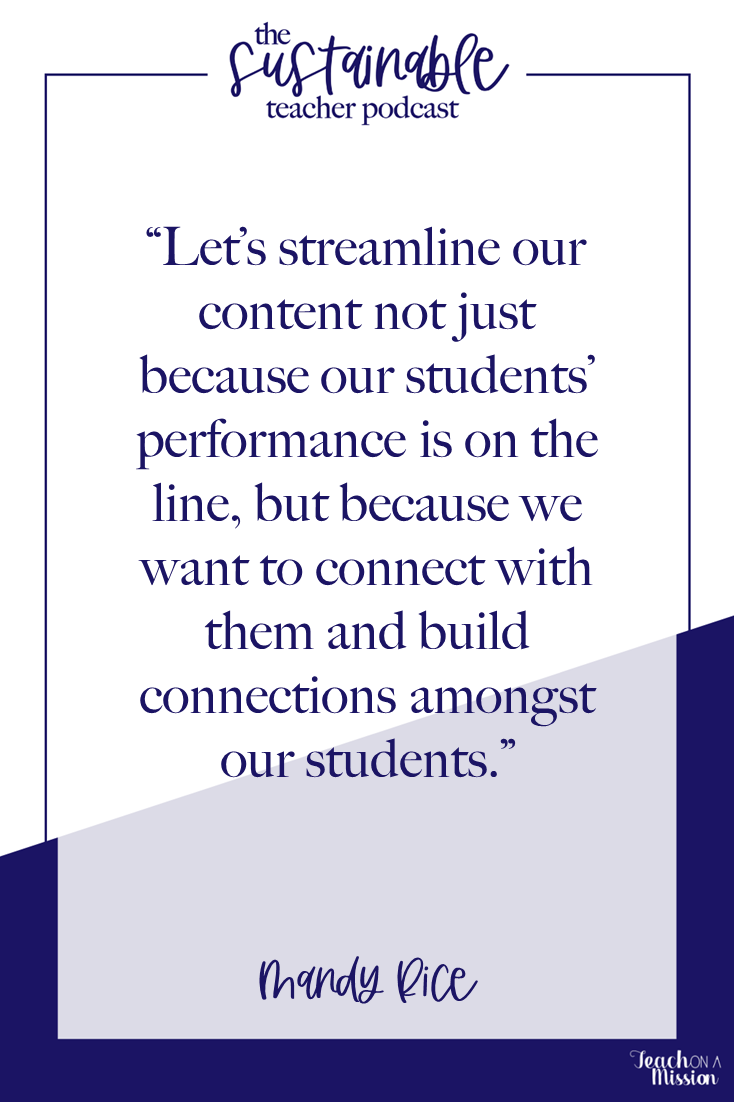How the Pandemic has Changed Our Students and How Teachers Can Respond
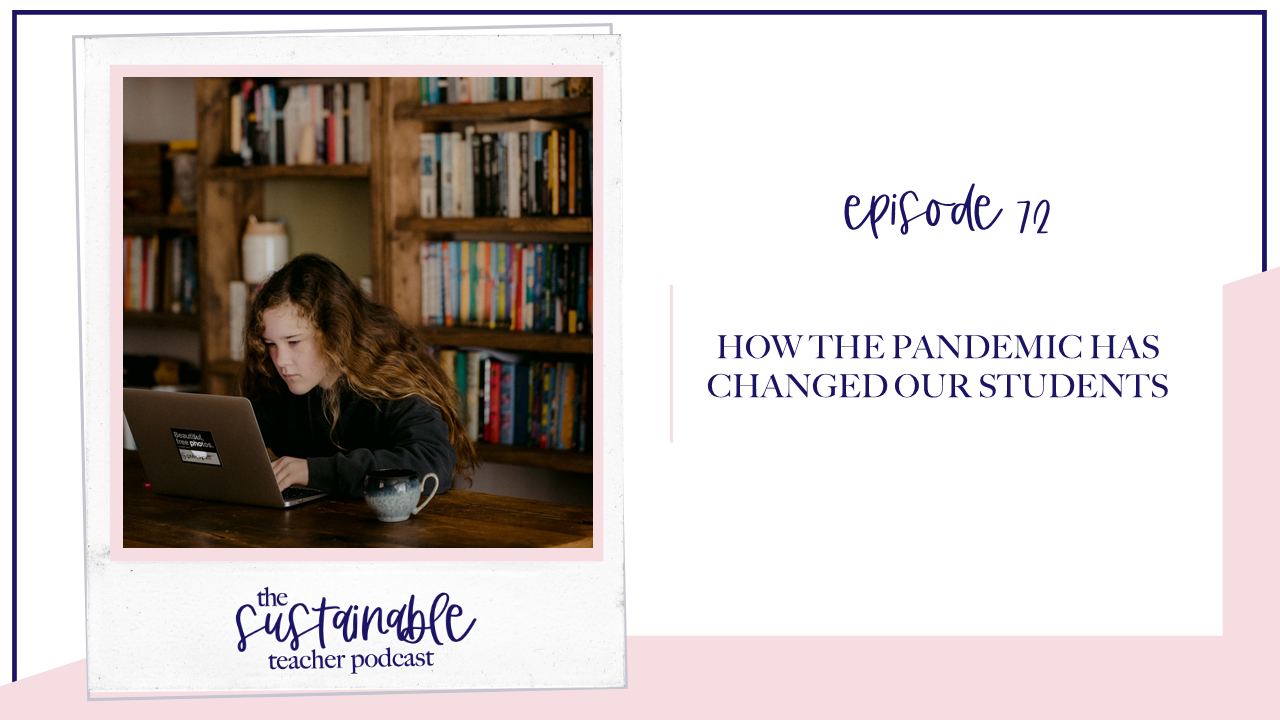
The pandemic took all the routines and understandings about school, shook them up in a paper bag, and spit them out with no semblance of what they once were.
At least that’s how some of our students are now behaving.
With student apathy and absences on the rise as expectations and stakes for students and teachers remain the same, we are working through trying times in education.
Education is different. Our students are different. And if we don’t respond to how our students have changed, we will not be as effective with them in our classrooms.
We must change with our students but in a way that does not sacrifice our evenings and weekends to do so. I’m all for changing with the times and responding to the ever changing needs of our students, but I believe it is absolutely contradictory to the system’s success if we do so at the sacrifice of our teachers’ well being. And requiring that they do it all without support will lead to the end of education as a whole because teachers will burn out and new teachers will avoid the career field entirely.
In this episode, we’ll look at how exactly students have changed from living through and going to school through a pandemic, and how as teachers we can respond to those changes without being the sacrificial lamb in the process - that is, we’ll respond to our students’ needs while striving for work-life balance as educators.
This is an important message that I believe and want all educators to hear, and I would SO appreciate you helping me do that… I would love it if you would share this episode with a teacher-friend which will help us spread our message of sustainability for teachers, and hopefully revive the career field a bit during this trying time. I truly appreciate your efforts.
Let’s get started.
Flipped Classroom Starter Kit
If you are a teacher who sees the benefit in having an accessible classroom, one that allows your students to take ownership of their learning while you step into the role of guide-on-the-side as they thrive and flourish in the learning experience you’ve created for them, then you need the all new Flipped Classroom Starter Kit.
The Flipped Classroom Starter kit is your guidebook of 5 steps to get started flipping your classroom. I take all the guesswork out of researching and DIYing it so you can reap the benefits my ten years of experience in flipping my own classrooms and helping hundreds of other teachers do the same. Grab it now as my gift to you at teachonamission.com/starterkit. Now, let’s get back to our episode.
How the Pandemic Has Changed Our Students
EdWeek released an article recently titled Teacher Job Satisfaction Hits An All Time Low. Just the title alone is intriguing, and I would encourage you to read the full article which we’ve linked on our full length show notes on our website, and you can find that by scrolling down and clicking on that first link.
I have one excerpt from that I article that I want to share with you and dive into a bit, and here it is…
“Takeru Nagayoshi, 30, the 2020 Massachusetts Teacher of the Year, was among those who left the classroom last year. After seven years as an award-winning Advanced Placement English teacher, he decided the frustrations of teaching—including “the impossibility of the work-life balance, and the guilt and fatigue that was associated with that”—were no longer sustainable for him. The pandemic had exacerbated students’ needs and changed their relationship with school, which led to lower attendance and less engagement. Students were disconnected from learning, and “it felt so defeating,” Nagayoshi said.”
Read the full length article here.
There are a couple things I want to point out from this excerpt.
First, it’s what millions of teachers are feeling this year, and that is the “impossibility of the work-life balance, and the guilt and fatigue that [is] associated with that’ [are] no longer sustainable…”
Teachers are at their wits’ end with how unsustainable this job is, and we’re seeing the research stand behind that no-so-new-sentiment from teachers. The stats are indicating a trend that’s been bubbling and growing for some time now, and my huge concern is that it’s going to overflow, and we’re going to see a massive loss of quality educators because of it.
And that is a huge fuel behind this podcast and my business of Teach On A Mission as a whole. To help teachers overcome the unsustainability of the job until systematic changes can be made that result in work-life balance as the norm.
The second thing I want to point out from this excerpt is something else that teachers are feeling right now, and that is this line…
“The pandemic has exacerbated students’ needs and changed their relationship with school, which [has] led to lower attendance and less engagement. Students [are disconnected from learning, and it [feels] so defeating.”
I can’t say it better myself, but I will elaborate on the crucial point this teacher is making in this quote.
Our students have changed. The pandemic has caused generational change in our society, in our schools, in our kids. And, right now, it feels incredibly defeating.
And we will continue to feel defeated if we don’t respond to the changes now.
It’s incredibly obvious that all parties involved from teachers to administrators to coaches to parents, we need to respond to these changes.
But oftentimes, in our response to the trends and changes amongst our students, and in the name of “doing what’s best for students,” teachers end up having to drain their resources and leave feeling exhausted, overwhelmed, and still ineffective.
So, this time, I would like to respond differently. Let’s focus our efforts on not only responding to the needs of our students after the pandemic, but let’s do so in ways that are also SUSTAINABLE for teachers.
Are you with me? I hope so, and this episode is for you if you’re like, “Heck yeah, Mandy.”
What I’m going to do in this episode then is lay out for you strategies to implement in your classroom that first, explain how those strategies allow you to respond to the changes in your students, and second, how they allow you to maintain a more sustainable work life.
Accessible Content Delivery
First up is to make the content of your course, whether it's a lecture or your unique way of delivering the content in ways that are understandable for your students, accessible outside of your classroom and outside of you. This is best done in video format.
Putting your content delivery in video format allows you to do so many things, but the first thing it does is streamline and condense the content in the first place, making it ultra effective in a lesser amount of time.
It also allows all of your students, no matter how they report to you, whether in person or remotely, to access your content in the same way, which is way more sustainable for you. Now, instead of preparing the content in different ways for multiple groups of students, you’re preparing it in one way for all of your students because it’s accessible to all of them, and creates a more unified classroom experience.
Lastly, streamlining the content into video format, whether students watch your videos outside of class or in class, allows you more time to get to the more engaging aspects of your course while they are in your presence.
As the quote from the EdWeek article pointed out, students are less invested and less engaged in their learning. This doesn’t mean we need to get out all the bells and whistles for them, but it certainly means we should make sure class time is a more valuable use of their time, and content delivery is the easiest part of learning, so why focus most of our class time on it? Instead, let’s use class time and the time with you and their classmates super valuable and engaging, rather than only focused on content delivery.
The last point I’ll make about streamlining your content into videos that are accessible to all students is this - once you’ve made the video one time, it’s made for all 30 to 150+ of your students this year, and every single one of your students in the years to come. No more delivering the same song and dance day in and day out, multiple times per day. Sure you’ll have to review and refine and clarify the content for your students each class and each year, and that’s because you will respond to the needs of your students, but no longer will you spend 30+ minutes every bell, every day saying the exact same things to different groups of students.
Instead you can use the time to conference one-on-one or in small groups of students.
Instead you can use the time engaging with interesting concepts and discussing current events.
Instead you can use class time to provide valuable and authentic feedback to your students in ways that will help them respond to their own educational needs and performance.
Asynchronous Experience Does Not Equal In-Person Experience
This leads me to the second strategy I’ll provide in this episode, and it’s more of a guiding suggestion because how it looks will be unique to your classroom.
Here’s the fact: a student’s experience in an asynchronous lesson or a remote classroom is NOT the equivalent experience of a student who is physically in your classroom. So we HAVE to stop treating it as such.
What this means is that a student who reports to you on Zoom or makes up work when they are absent… it’s just not the same as when they are in class, and the effects of that fact are going to most be felt by students, and it’s going to show up in the scores.
So what are we to do?
First, get your face on video that all of your students will now be watching, as we pointed out in our first strategy, so that they see you, know you, and experience as closely as possible what it is to be taught by you. Not by someone else, not without your face on the video at least part of the time.
Many students will resist the connection, they’ll resist even the benefits of being in person, which is the human connection that is made with their classmates and their teacher. But, teacher-friend, push back. Get your face on video where you’re delivering the content, make a video response to an email or Remind text you get (it’s faster that way too). The important thing being, they are connecting with you and it’s in ways that are sustainable for you.
The Most Important Initiative Is Human Connection
Which leads me to my final point. It’s kind of nice in this episode how each of the points I’m making have kind of bled together and build off of one another, making it more manageable for you I think.
As we move into the summer months at the time this episode will air, and teachers are looking ahead to next year and considering any changes they need to make, I feel deep in my soul that the biggest initiative when need to commit to as educators is not the next, new fancy, trendy classroom strategy. Nope, I think the most important initiative schools need to latch onto for coming years is simply human connection.
Student-to-student connection.
Student-to-teacher connection.
Student-to-support staff connection.
Student-to-coach connection.
And the list goes on.
You know what this means? This means that if you can streamline your content and build up student engagement in your class time, if you have time left over, DO NOT, I repeat, DO NOT feel the need to cram another initiative or trendy new thing in there.
Don’t do it. Let there be time to talk about who’s taking who to homecoming. Let there be time to share about their weekend and what happened at last night’s soccer game. Let there be time to laugh, and get serious, and talk about life, and have fun together.
Whether they’ll admit it or not, distance learning has caused a residual distance in our students and in our schools.
Let’s fight back.
Let’s streamline our content not just because our students’ performance is on the line, but because we want to connect with them and build connections amongst our students.
Alright, teacher-friend, there you have it for episode 72 of the Sustainable Teacher. If what I’ve shared in today’s episode resonates with you, I’ve got two things for you to take action on right now…
- Share this episode with your teacher-friends and unite to fight back against the distance and build that connection again in our schools, and
- Get on our VIP waitlist to know what is coming in the very near future that you are absolutely going to want to hear about when it’s ready - it’s my very own professional development where we talk about strategies like these and more focused on being effective in the classroom WHILE sustainable as a teacher so you can be present at home and in your personal life. You can get on that waitlist in the link below - you can’t miss it.
I hope to see you there for that exciting announcement coming very soon, and I’ll see you right here next week on the Sustainable Teacher.
Bye for now.


